No yard gardening method – sounds like an oxymoron, right? But trust me, it’s not! I’m here to tell you that you don’t need acres of land to cultivate your green thumb and enjoy the satisfaction of growing your own food or flowers. Forget the sprawling lawns and back-breaking tilling; we’re diving into the wonderful world of gardening without a yard!
For centuries, humans have cultivated plants in containers, from the hanging gardens of Babylon to the humble window boxes of European cottages. This resourceful approach allowed people to bring nature into their homes and nourish themselves, regardless of their living situation. Today, with increasing urbanization and smaller living spaces, the need for innovative gardening solutions is more pressing than ever.
Are you yearning for fresh herbs to spice up your meals? Do you dream of vibrant blooms brightening your balcony? Or perhaps you simply crave the therapeutic joy of nurturing life? If you answered yes to any of these, then this DIY guide is for you! I’ll share my favorite tips and tricks for mastering the no yard gardening method, transforming even the smallest spaces into thriving green havens. Get ready to unlock the secrets to container gardening, vertical gardening, and other space-saving techniques that will have you harvesting your own bounty in no time. Let’s get growing!
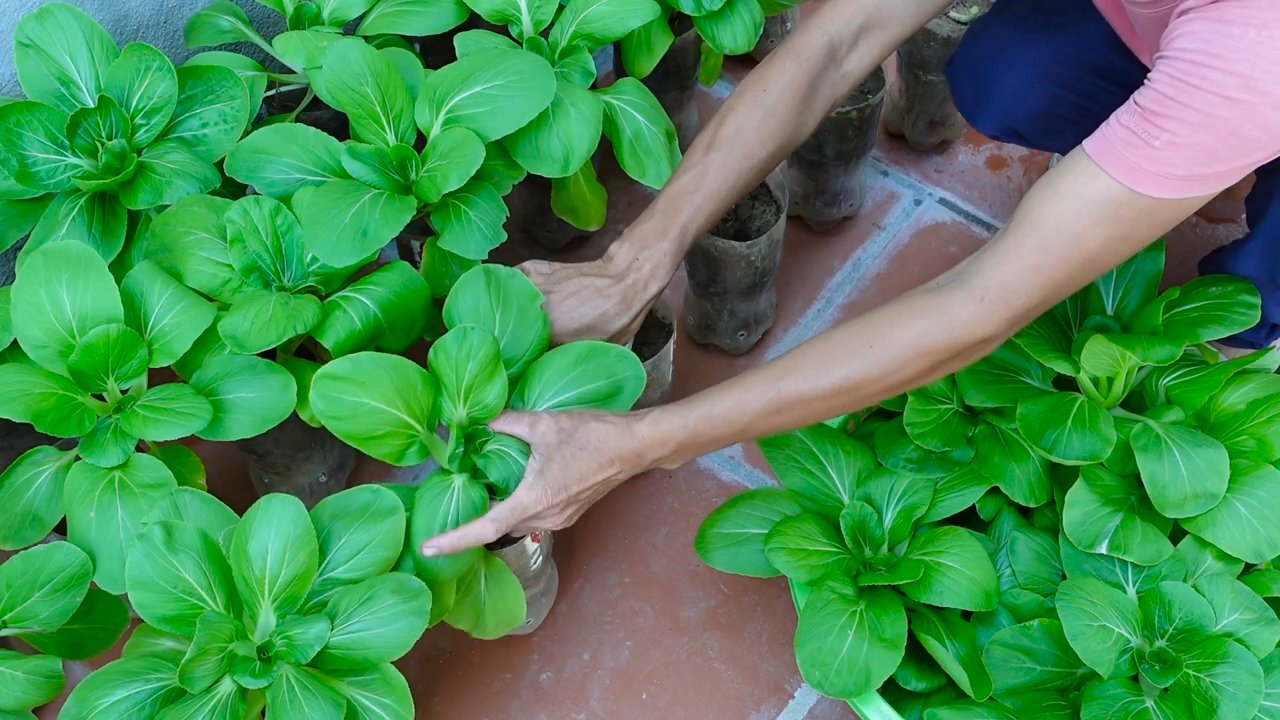
Creating a Thriving No-Yard Garden: A DIY Guide
Hey there, fellow plant enthusiasts! So, you’re itching to grow your own food or flowers but lack the traditional backyard space? Don’t fret! I’m here to guide you through the wonderful world of no-yard gardening. It’s all about getting creative and maximizing the space you *do* have, whether it’s a balcony, patio, rooftop, or even just a sunny windowsill. Let’s dive in!
Choosing Your No-Yard Gardening Method
Before we get our hands dirty, let’s explore some popular no-yard gardening methods. This will help you decide which approach best suits your space, lifestyle, and the types of plants you want to grow.
* Container Gardening: This is probably the most common and versatile method. You can use pots, planters, hanging baskets, or even repurposed containers like old buckets or tires. The possibilities are endless!
* Vertical Gardening: Perfect for small spaces, vertical gardens utilize walls, fences, or trellises to grow plants upwards. Think climbing vines, herbs, or even strawberries.
* Raised Beds (on Patios/Balconies): If you have a larger patio or balcony, raised beds can provide a more substantial gardening experience. Just make sure your structure can handle the weight!
* Hydroponics: This soilless gardening method uses nutrient-rich water solutions to grow plants. It’s a bit more technical but can be incredibly efficient.
* Aquaponics: A combination of aquaculture (raising fish) and hydroponics, aquaponics uses fish waste to fertilize plants. It’s a fascinating and sustainable system.
* Window Boxes: A classic choice for adding beauty and greenery to your windowsills. They’re great for herbs, flowers, and even some vegetables.
For this guide, I’m going to focus primarily on container gardening and vertical gardening, as they’re the most accessible and beginner-friendly options.
Gathering Your Supplies
Okay, now that we’ve chosen our method, let’s gather the necessary supplies. This list might vary slightly depending on your specific project, but here’s a general overview:
* Containers: Choose containers that are appropriately sized for the plants you want to grow. Make sure they have drainage holes!
* Potting Mix: Don’t use garden soil in containers! It compacts too easily. Opt for a high-quality potting mix that’s lightweight and well-draining.
* Seeds or Seedlings: Decide what you want to grow and purchase seeds or seedlings from a reputable source.
* Fertilizer: A balanced fertilizer will provide your plants with the nutrients they need to thrive.
* Watering Can or Hose: Essential for keeping your plants hydrated.
* Gardening Gloves: Protect your hands from dirt and potential irritants.
* Trowel and Hand Rake: Useful for planting and maintaining your garden.
* Vertical Gardening Structure (if applicable): This could be a trellis, pallet, hanging planter, or any other structure that allows plants to grow upwards.
* Plant Labels: Help you keep track of what you’ve planted where.
* Optional: Mulch (to retain moisture), pest control solutions (organic options are best!), and pruning shears.
Step-by-Step Guide to Container Gardening
Let’s get our hands dirty and start planting!
1. Choose Your Containers Wisely: Select containers that are the right size for your plants. A small herb like basil won’t need as much space as a tomato plant. Ensure each container has drainage holes to prevent waterlogging. If your container doesn’t have drainage, you can drill some holes yourself. I’ve used everything from plastic pots to terracotta pots, and even repurposed buckets. Just make sure they’re clean!
2. Prepare Your Potting Mix: Fill your containers with a high-quality potting mix. Don’t use garden soil, as it can compact and hinder drainage. I like to mix in some compost for added nutrients. Leave about an inch or two of space at the top of the container.
3. Plant Your Seeds or Seedlings: If you’re starting from seeds, follow the instructions on the seed packet for planting depth and spacing. If you’re using seedlings, gently remove them from their nursery pots and loosen the roots slightly. Dig a hole in the potting mix that’s large enough to accommodate the root ball, place the seedling in the hole, and backfill with potting mix.
4. Water Thoroughly: After planting, water your plants thoroughly until water drains out of the drainage holes. This helps settle the soil and ensures that the roots are well-hydrated.
5. Fertilize Regularly: Container plants need regular fertilization because the nutrients in the potting mix are quickly depleted. Use a balanced fertilizer according to the package instructions. I prefer using organic fertilizers like fish emulsion or compost tea.
6. Provide Adequate Sunlight: Most vegetables and herbs need at least 6 hours of sunlight per day. Place your containers in a sunny location. If you don’t have enough sunlight, you can supplement with grow lights.
7. Monitor and Water as Needed: Check your plants regularly for signs of dryness. Water when the top inch of soil feels dry to the touch. Avoid overwatering, as this can lead to root rot.
8. Pest and Disease Control: Keep an eye out for pests and diseases. If you spot any problems, take action immediately. Organic pest control solutions like neem oil or insecticidal soap can be effective.
9. Harvest and Enjoy! Once your plants start producing, harvest them regularly to encourage continued growth. There’s nothing quite like the taste of homegrown vegetables and herbs!
Step-by-Step Guide to Vertical Gardening
Let’s take our gardening to new heights!
1. Choose Your Vertical Structure: There are many options for vertical gardening structures. You can use a trellis, pallet, hanging planter, or even build your own custom structure. Consider the size and weight of the plants you want to grow when choosing your structure. I’ve seen people use old ladders, repurposed shipping containers, and even shoe organizers!
2. Prepare Your Planting Medium: Depending on the type of vertical garden you’re creating, you’ll need to prepare your planting medium. For hanging planters, use a lightweight potting mix. For pallet gardens, you can line the pallet with landscape fabric and fill it with potting mix.
3. Plant Your Seeds or Seedlings: Plant your seeds or seedlings according to the instructions on the seed packet or nursery pot. Make sure to space them appropriately to allow for growth.
4. Water Thoroughly: Water your plants thoroughly after planting. Vertical gardens tend to dry out more quickly than traditional gardens, so you may need to water them more frequently.
5. Fertilize Regularly: Vertical gardens also need regular fertilization. Use a balanced fertilizer according to the package instructions.
6. Provide Adequate Sunlight: Just like container gardens, vertical gardens need plenty of sunlight. Place your structure in a sunny location.
7. Monitor and Water as Needed: Check your plants regularly for signs of dryness and pests. Water as needed and take action to control any pests or diseases.
8. Prune and Train Your Plants: Prune your plants regularly to encourage bushier growth and remove any dead or diseased leaves. Train climbing plants to grow up your vertical structure.
9. Harvest and Enjoy! Harvest your crops as they ripen and enjoy the beauty and bounty of your vertical garden.
Choosing the Right Plants for Your No-Yard Garden
Not all plants are created equal when it comes to no-yard gardening. Here are some of my favorite plants that thrive in containers and vertical gardens:
* Herbs: Basil, mint, rosemary, thyme, oregano, chives, parsley. Herbs are generally easy to grow in containers and can be harvested frequently.
* Vegetables: Tomatoes (especially determinate varieties), peppers, lettuce, spinach, kale, radishes, carrots, bush beans, strawberries. Look for compact or dwarf varieties that are well-suited for containers.
* Flowers: Petunias, geraniums, impatiens, marigolds, pansies, begonias. Flowers add color and beauty to your no-yard garden.
* Fruits: Strawberries, blueberries (in acidic soil), dwarf citrus trees. With proper care, you can even grow fruit in containers!
Tips for Success
Here are a few extra tips to help you succeed with your no-yard garden:
* Choose the Right Location: Consider the amount of sunlight your plants need when choosing a location for your garden.
* Use High-Quality Potting Mix: Don’t skimp on the potting mix! It’s the foundation of your garden.
* Water Regularly: Container plants dry out more quickly than plants in the ground, so water them regularly.
* Fertilize Regularly: Container plants need regular fertilization to thrive.
* Monitor
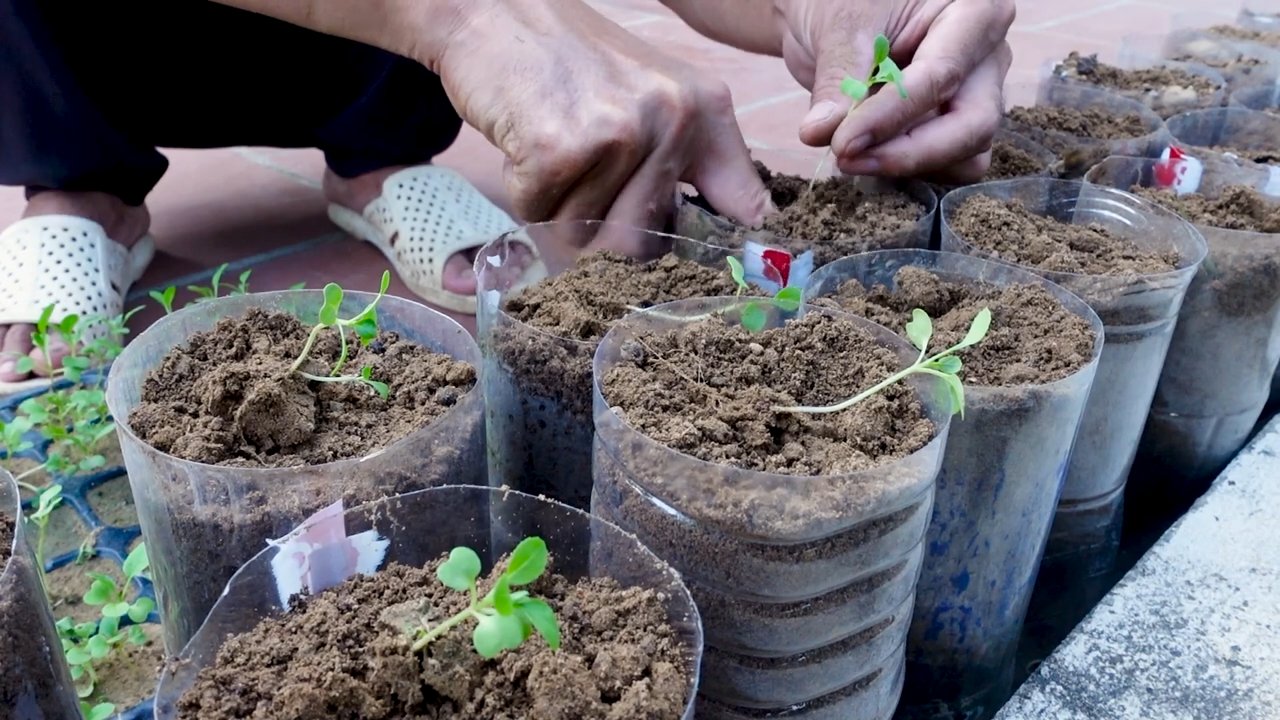
Conclusion
So, there you have it! Transforming your limited space into a thriving garden oasis is more achievable than you ever imagined. This no yard gardening method isn’t just a trend; it’s a sustainable and accessible way to connect with nature, grow your own food, and beautify your surroundings, regardless of your property size.
We’ve explored the versatility of container gardening, the space-saving magic of vertical structures, and the ingenious possibilities of hydroponics. Each technique offers a unique pathway to cultivate your green thumb, even without a traditional backyard. The beauty of this approach lies in its adaptability. You can tailor your garden to your specific needs, preferences, and available resources.
Think about the possibilities! Imagine fresh herbs readily available for your culinary creations, vibrant flowers cascading from hanging baskets, or a bountiful harvest of tomatoes ripening on your balcony. This isn’t just about growing plants; it’s about creating a personalized ecosystem that nourishes your body and soul.
Don’t be afraid to experiment with different plant varieties. Try growing dwarf fruit trees in large containers, create a miniature succulent garden in a repurposed trough, or cultivate a fragrant herb wall near your kitchen window. The options are truly endless. Consider companion planting to maximize your yields and deter pests naturally. Basil and tomatoes, for instance, are excellent companions, as basil repels tomato hornworms. Marigolds are also great for deterring many common garden pests.
Beyond the practical benefits of fresh produce and beautiful blooms, no yard gardening offers a therapeutic escape from the stresses of modern life. The simple act of tending to plants, nurturing their growth, and witnessing the miracle of life unfolding can be incredibly rewarding and grounding. It’s a chance to slow down, connect with nature, and cultivate a sense of peace and well-being.
We encourage you to embrace this no yard gardening method and embark on your own green journey. Start small, experiment with different techniques, and don’t be discouraged by initial setbacks. Gardening is a learning process, and every mistake is an opportunity to grow (pun intended!).
Most importantly, we want to hear about your experiences! Share your successes, your challenges, and your creative solutions in the comments below. Let’s build a community of no yard gardeners, supporting each other and inspiring others to discover the joys of growing their own. Post pictures of your thriving container gardens, your innovative vertical structures, and your hydroponic setups. Let’s show the world that a green thumb can flourish anywhere, regardless of the size of your yard.
So, grab your pots, your seeds, and your gardening gloves, and get ready to transform your space into a vibrant oasis. The world of no yard gardening awaits!
Frequently Asked Questions (FAQ)
What are the best plants to grow using the no yard gardening method?
The best plants for no yard gardening depend on your climate, the amount of sunlight your space receives, and your personal preferences. However, some generally successful options include:
* **Vegetables:** Tomatoes (especially determinate or bush varieties), peppers, lettuce, spinach, kale, radishes, carrots (short varieties), bush beans, peas, cucumbers (trellised), and herbs.
* **Fruits:** Strawberries, blueberries (acidic soil required), raspberries (compact varieties), dwarf fruit trees (apples, pears, citrus).
* **Flowers:** Petunias, geraniums, impatiens, pansies, marigolds, zinnias, begonias, and herbs like lavender and rosemary.
Consider the size of the mature plant when choosing varieties for containers. Dwarf and compact varieties are generally better suited for limited spaces.
How much sunlight do my plants need?
Most vegetables and flowering plants require at least 6-8 hours of direct sunlight per day. Leafy greens and herbs can tolerate partial shade (4-6 hours of sunlight). Observe your space throughout the day to determine how much sunlight it receives. If your space is shady, consider growing shade-tolerant plants or using grow lights.
What type of soil should I use for container gardening?
Avoid using garden soil in containers, as it can become compacted and poorly drained. Instead, use a high-quality potting mix specifically formulated for containers. Potting mix is typically a blend of peat moss, perlite, and vermiculite, which provides good drainage and aeration. You can also amend your potting mix with compost for added nutrients.
How often should I water my container plants?
Watering frequency depends on the type of plant, the size of the container, the weather conditions, and the type of potting mix. Check the soil moisture regularly by sticking your finger about an inch into the soil. If the soil feels dry, it’s time to water. Water thoroughly until water drains out of the bottom of the container. Avoid overwatering, as this can lead to root rot. During hot, dry weather, you may need to water your plants daily.
How often should I fertilize my container plants?
Container plants need regular fertilization because the nutrients in the potting mix are quickly depleted. Use a balanced, water-soluble fertilizer according to the package directions. Fertilize every 2-4 weeks during the growing season. You can also use slow-release fertilizer granules, which provide a steady supply of nutrients over a longer period.
How do I deal with pests and diseases in my no yard garden?
Prevention is key to managing pests and diseases. Choose disease-resistant plant varieties, provide good air circulation, and avoid overwatering. Inspect your plants regularly for signs of pests or diseases. If you find pests, try hand-picking them off or using insecticidal soap or neem oil. For diseases, remove affected leaves or plants and treat with a fungicide if necessary. Companion planting can also help deter pests naturally.
Can I grow vegetables indoors using hydroponics?
Yes, hydroponics is an excellent option for growing vegetables indoors without soil. You’ll need a hydroponic system, grow lights, and nutrient solution. Popular vegetables for hydroponics include lettuce, spinach, herbs, tomatoes, and peppers.
What are some creative ideas for vertical gardening?
Vertical gardening is a great way to maximize space in small areas. Some creative ideas include:
* **Living walls:** Create a wall of plants using a modular system or a DIY structure.
* **Hanging baskets:** Hang baskets from balconies, fences, or eaves.
* **Trellises:** Use trellises to support climbing plants like cucumbers, tomatoes, and beans.
* **Pallet gardens:** Repurpose wooden pallets into vertical planters.
* **Stacked planters:** Stack planters on top of each other to create a tiered garden.
* **Repurposed materials:** Get creative and use repurposed materials like old gutters, plastic bottles, or shoe organizers as planters.
How do I overwinter my container plants?
Some container plants can be overwintered indoors, while others need to be discarded. Tender perennials and herbs can be brought indoors before the first frost and placed in a sunny location. Water sparingly during the winter months. Hardy perennials can be left outdoors in their containers, but you may need to protect them from extreme cold by wrapping the containers in burlap or moving them to a sheltered location.
What if I don’t have a balcony or patio?
Even if you don’t have a balcony or patio, you can still create a no yard garden. Use windowsills, rooftops (with permission and proper safety precautions), or even indoor spaces with grow lights. Get creative and find ways to bring nature into your home, no matter how small your space may be.

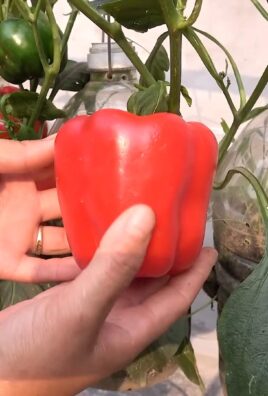
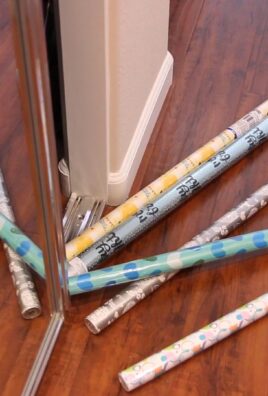
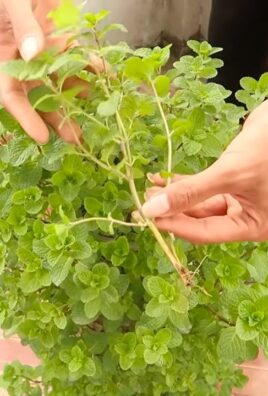
Leave a Comment